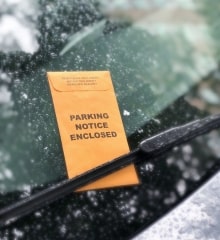How Long Does the Foreclosure Process Take?

Are you at risk of losing your home? Facing foreclosure can be an emotionally and financially difficult situation that leaves many feeling stressed, confused, and helpless. However, understanding how long each step will take can help demystify the situation.
In this blog post, we'll look at how long a typical process can last, so you know what to expect as you go through it. We’ll also discuss how you can avoid losing your house altogether by filing for bankruptcy.

What is Foreclosure?
Foreclosure is a legal process that allows a lender to reclaim financed property when a borrower falls behind on their payments. If a homeowner is unable to make their mortgage payments and fails to catch up under the terms outlined by their loan agreement, the lender can take back the house to recoup lost funds.
How long the process will take can vary depending on the state you live in and the bank’s preferred course of action. Typically, it can take anywhere from a few months to several years before a home is officially foreclosed on.
The Two Types of Foreclosure
In general, there are two different types of foreclosure: power of sale and judicial. Both processes are designed to help lenders recover losses that occur when people default on their mortgages for too long. The types of foreclosure available to lenders and the rules they must follow during the process vary between states.
Power of Sale
While every state recognizes judicial foreclosure, a limited number of states allow lenders to foreclose on homes through power of sale. Power of sale allows a lender to sell mortgaged property without going through a court procedure. Under this method, the process typically will take a few months to complete.
Judicial Foreclosure
The judicial foreclosure process requires a lender to obtain a court order in order to foreclose on someone's property. Naturally, this option tends to require more time and if the borrower contests the matter, the proceedings can easily take over a year.
Main Phases in Foreclosure
The process consists of several different stages. How long each phase will take varies depending on state laws, the lender, and the terms of the mortgage involved.
The process begins when the homeowner fails to make payments and defaults on their loan agreement. After 90 days of missed payments, the lender will issue a notice of default which informs the homeowner of their status. Then, the borrower will typically have another 90 days to reinstate the loan by making payments to bring it current.

If the borrower fails to reinstate the loan, the bank will issue a notice of sale detailing when and where the property will be sold at auction. This notice is typically recorded in the county where the property is located and published in a local newspaper.
Once a notice of sale has been issued, the borrower can only keep their house by redeeming it. This requires the homeowner to pay the total amount owed on the loan before the sale, or in some states, within a short period of time after the auction.
How long a person has to redeem their house depends on the state. However, if the home is not redeemed in time, it will be sold to the highest bidder and the borrower will need to voluntarily relinquish possession of the property or face eviction.
How Do Your State Laws Influence The Process?
State laws have a significant impact on the process. For instance, your state laws may affect:
-
The type of foreclosure available to lenders
-
How long various stages of the process take
-
The information that must be included in legal notices
-
Whether mediation or other pre-foreclosure options are mandatory
-
How long a borrower has to redeem a home
-
Whether or not you can be charged for a deficiency balance on your home
Because the process can vary so drastically between states, it’s vital to discuss your situation with a knowledgeable local attorney. Even if your lender has already filed for foreclosure, filing for bankruptcy will immediately halt the process. Filing for Chapter 13 bankruptcy can also enable you to keep your house by reorganizing your past-due mortgage payments, along with your other debts, into a 3-to-5-year repayment plan.
The sooner you get a bankruptcy lawyer involved, the better, so schedule your free debt analysis with DebtStoppers today. We can review your financial situation and help you determine the best course of action for saving your home.





